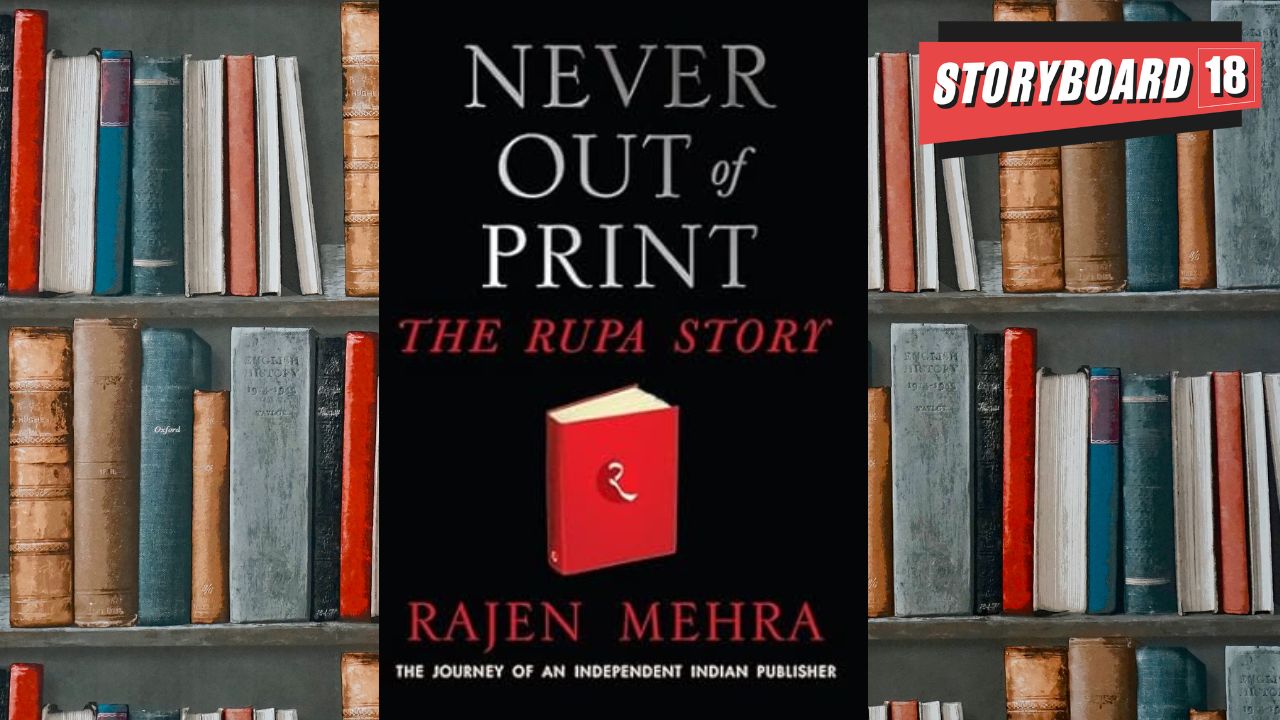A Made In India story
Rajan Mehra’s magnum opus is a tribute to the pleasure of reading. Titled ‘Never Out Of Print – The Journey of an Independent Indian Publisher,’ is an autobiography of Rupa – the publishing house.
The book is a pictorial odyssey-and the shots themselves are worth the journey of the book. Because they represent unsung heroes who did their part and faded into the twilight-, managers and owners of bookstores, editors and sales staff, who make the bestsellers but never make the headlines.
Five things that stood out for me.
1.The layout of the book
The three parts of the book are laid out unlike any other book in recent times. There are pictures and illustrations right next to the text that alludes to them. While most books tend to have two segments that bundle together all pictures, this book is a labour of love. In particular, the layout of the chapter, ‘Gulzar: The Man in White’ will bring alive the magic of reading to the most reticent of readers.
2. The narration of the book‘
It seems that a Scottish man-K. Jackson Marshall- persuaded Daudayal Mehra (Rajen Mehra’s grand uncle) a dhoti-clad school drop out to sell books instead of hosiery! This is how Rupa’s journey began in 1936. At the time, many international publishers had not yet entered India. In those times, the paperback distribution rights for international publishers such as Penguin, were originally given to Rupa.
3. The design of the book
Mohit Suneja’s caricatures (check out Don Bradman) and Bena Sareen’s sense of aesthetics have given us many reasons to be happy down the years. I have seen their work up close with my own book, ‘The Stranger in The Mirror’, the biography of director Rakeysh Omprakash Mehra. The mix of colours used in the book itself are an absolute delight.
4. The first book
Herman Hesse’s ‘Siddhartha’ was the first book published by Rupa in 1968. Over the years, as international publishers found their own way into India, Rupa had to re-imagine its own strengths. That’s when Anurag Mathur’s ‘The Inscrutable Americans’ and Chetan Bhagat’s ‘Five Point Someone’ happened. Rajan Mehra finds time to give ample tribute to the teams that made Rupa’s bestsellers happen.
5. The authors
Rajen Mehra expresses gratitude to his authors- Gavaskar’s autobiography ‘Sunny Days’ got into its 31st reprint edition in 2023, 47 years after it was first published. Photographs of the manuscript written in long hand by Gavaskar himself are an absolute delight. Camellia Punjabi, Ruskin Bond, L K Advani, Maharani Gayatri Devi-
This is a story of emergence, assimilation and re-emergence. And like all autobiographies, there is plenty of nostalgic flavour.
Here’s a quiz based on this column for readers of Bookstrapping.
Which landmark book became the first book published by Rupa in 1968?
Send your responses to reeta@reetaramamurthygupta.in
The most detailed and accurate response will get featured in next week’s review
Reeta Ramamurthy Gupta is a columnist and bestselling biographer. She is credited with the internationally acclaimed Red Dot Experiment, a decadal six-nation study on how ‘culture impacts communication.’ On Instagram @OfficialReetaGupta
